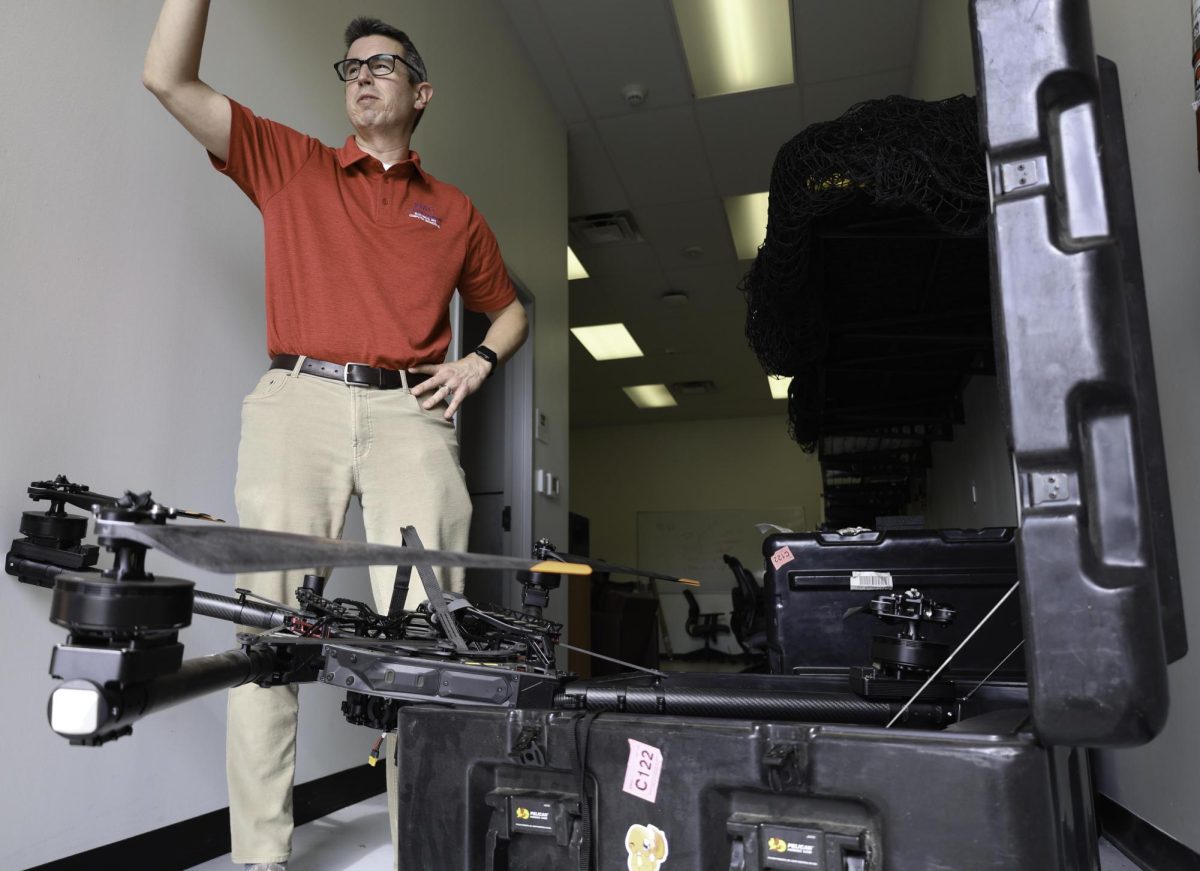Pink lights glowed over Moody Coliseum one evening in early October. A line of more than 50 students filtered into one of five carnival tents, each student grabbing a glow in the dark shirt. In another tent, students paused to take a picture with a monkey while a few laughed as two men on stilts play a game of basketball outside the tent.
But before Program Council could host this festive event called Late Night Carnival, there was a lot of work to do behind the scenes.

“Planning this event has been super crazy,” said Paige Ware, the Program Council programming chair.
Hosting an event at SMU is a lengthy process. There are 12 guidelines to registering a social event and more than five policies to follow. If the event is off campus, the social chairs of the organization have to provide a guest list of under 400 students.
For the 2014-2015 school year, 745 events hosted by student organizations were registered at Orgs@SMU.
Every week SMU student groups, including fraternities and sororities, plan parties and events with the hope of attracting a crowd. These events can cost well into the thousands of dollars and take months to plan.
“Event planning can be very competitive depending on what your target demographic is,” said George Artis, founder of the event planning service E3000.
Artis, an SMU graduate, plans a range of events in the Dallas area and sees party planning as a science. According to Artis, successful events are often imitated so event planners have to get creative to keep guests coming to their parties. This is true even on college campuses, where parties can be a competitive sport.
“It challenges you to do better and continue to come up with original, unique ideas and themes, so your only true competitor is yourself,” Artis said.
Drag Bingo takes a unique route when it comes to throwing an event. Students who went this year were treated to more than an average Bingo night. The bingo goers got to see drag queens perform and a chance to win Bose speakers, a flat-screen television, a Wii U, among other prizes.
After spending $5,000 on Drag Bingo, sponsored by SPECTRUM, SPECTRUM president Jacob Conway feels driven to improve on Drag Bingo, but he doesn’t necessarily feel pressured to.
“It’s more of wanting to do better than last year, making it more special and making the people really glad they went. It’s an internal motivation,” said Conway.
More than $1,500 from the budget went towards prizes. SPECTRUM prepared for 500 hundred students and the event itself attracted more than 350. Overall the three hour event took five months to plan.
Sigma Chi’s Wet ‘N’ Waka at Bungalow in September took only three months to plan, but the idea came to Sigma Chi’s co-social chairs Thomas Thayer and Jorge Hinojosa at the end of the 2015 spring semester. Party goers got to listen to Waka Flocka Flame perform and swim at Bungalow Beach Club’s pool.
“Right when summer hit, I contacted a talent booking agency, Haze College Booking, through an internship I was working with Beatbox Beverages. From there I began discussing with them artists who would be possible,” Thayer said.
After announcing their event on Facebook, Thayer and Hinojosa were surprised to see that the their guest list had surpassed 400 people in under an hour. According to Event Guidelines, SMU events can’t have more than 400 attendees. By the day of the event, more than 1,000 had RSVP’ed.
“I advised everyone in my fraternity to invite people through the page, and I contacted members from each sorority to spread the word to a wider audience,” Thayer said.
Thayer and Hinojosa also posted a promotional video to get people to attend . Hinojosa believes that event planning at SMU is competitive but it’s not the most important part.
“What I’ve come to accept is that the most important aspect of an event is not in the final outcome, it’s the event’s preparation, “Hinojosa said. “If you take care of the little things, the bigger things will take care of themselves. So each party becomes a direct result of the amount of effort put into it.”
That effort included booking a venue, choosing performers, and working with the agencies in charge of the venue to create the right atmosphere for the event. All this work helped create a party where guests could “let loose and have a good time,” Thayer said.
The Late Night Carnival hosted by Program Council was planned in three weeks and had roughly 400 students in attendance. At the end of last semester, the members of Program Council started planning for a concert in front of Moody Coliseum for early October. But that concert would have been too similar to the Centennial Countdown Concert hosted in Moody Coliseum which Program Council had planned with the Student Foundation, for late September.
Instead of planning two concerts within a week of each other, Program Council decided on the carnival.
“Everything got changed around, every challenge that could happen happened so this event was planned in three weeks,” Ware said. “We had started with the idea of a carnival tent and then we found all these companies that had all these carnival things and then it kind of just came together.”
The event included monkeys, carnival games, clowns, cotton candy, stilt artists, and a mock cocktail bar.
Along with entertainment and games, Program Council also brought themed t-shirts and cups that students could take with them for free.
After 16 years of planning parties, Artis acknowledges that a successful events consist of thinking an event out to the tiniest detail along with creating an atmosphere.
“The planning, paying attention to the smallest detail, offering a ‘wow factor’ is what leaves an imprint on the minds of the attendees,” Artis said.








